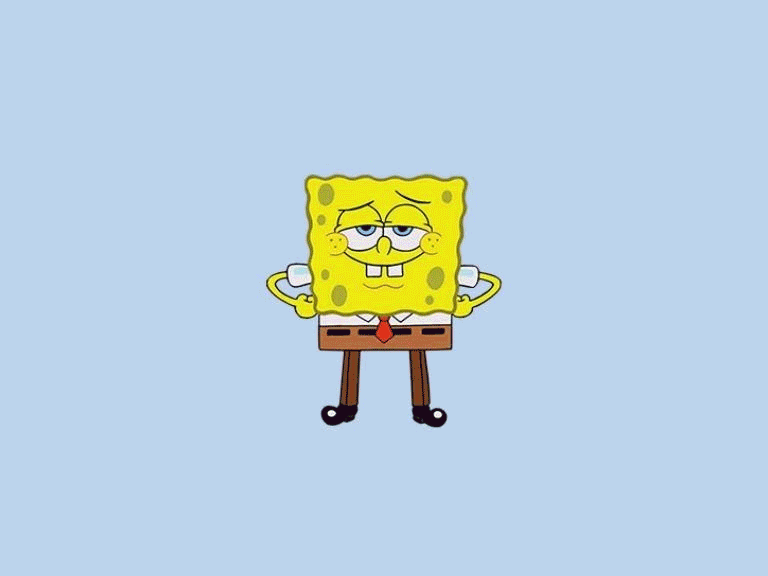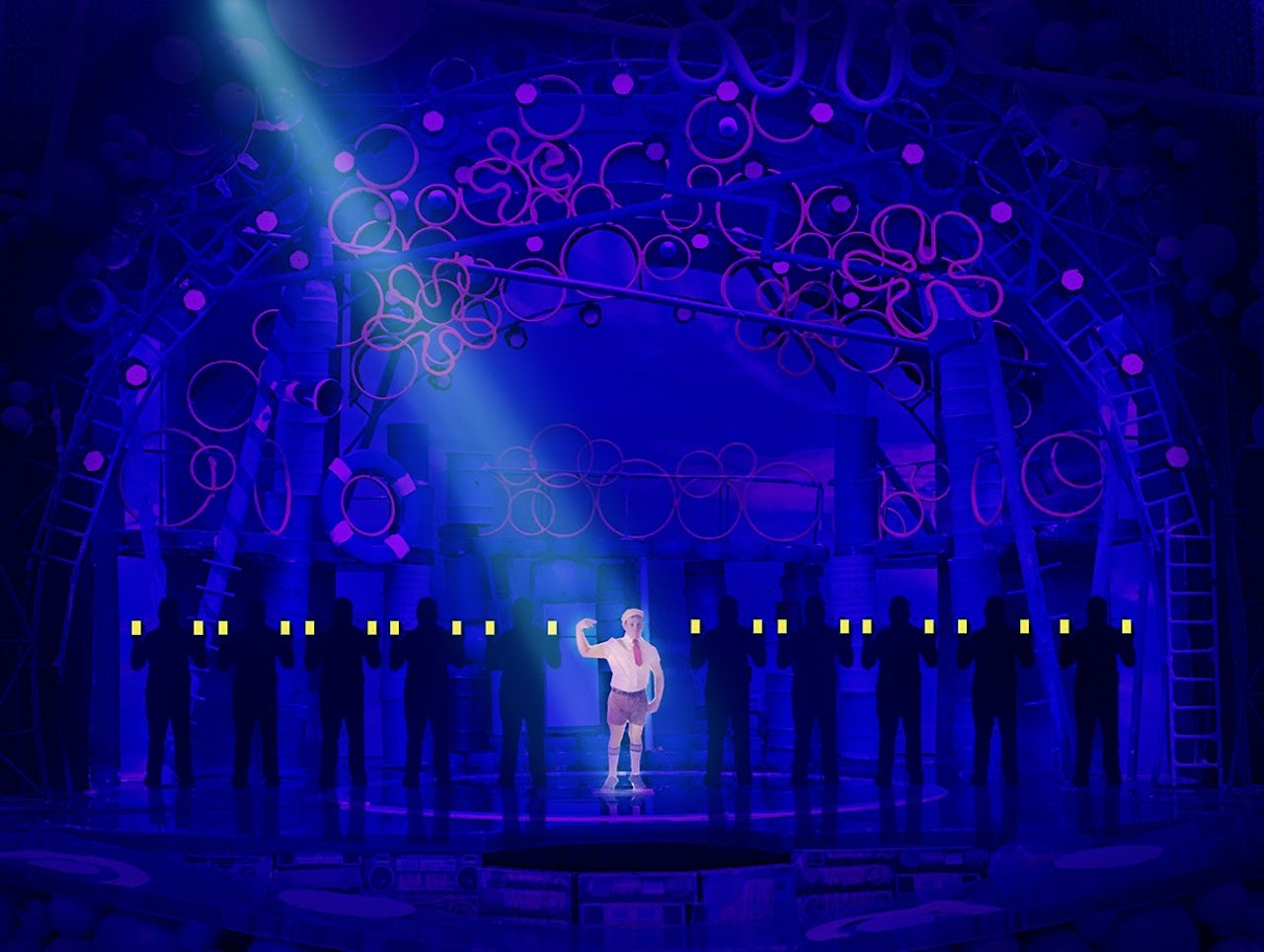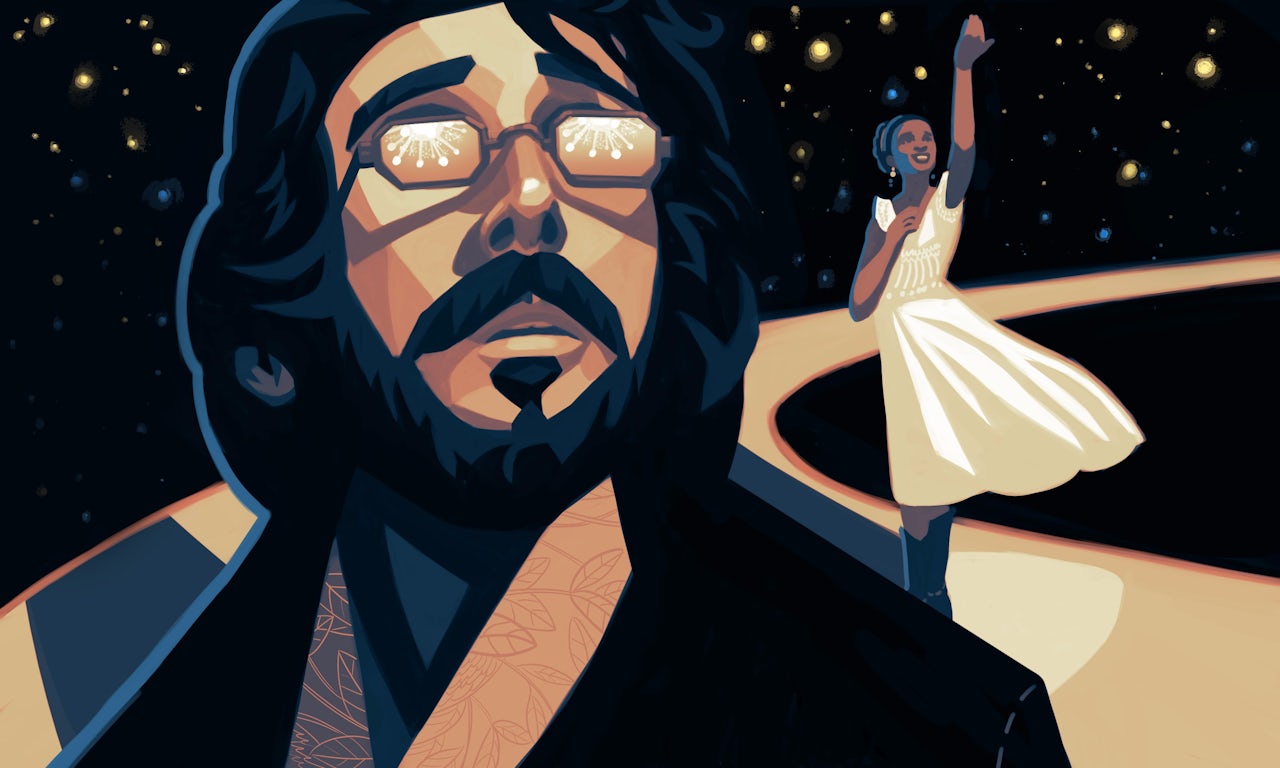During our early years as children, we study the basic laws of earthly physics. At first, we believe that a face behind hands has disappeared from existence altogether. By six or seven, we come to learn that a quantity of milk in a tall, thin glass remains the same in a short, fat cup. We accept that we cannot fly or walk through walls. Only once we’ve internalized such facts are we truly equipped to appreciate cartoons.
Enjoying cartoons relies, in part, on an implicit knowledge of conventional physics. Wylie Coyote running off a cliff is only funny if you know that you cannot. Sylvester the Cat knocked down and seeing stars will only get a laugh if you know that you won’t. These gags make a joke of how real matter behaves, and they almost always do so in a systematic way. Like earthly physics, cartoon physics are consistent. A list known as “O’Donnell’s Laws of Cartoon Motion” lays out some of animation’s oldest rules:
1. Any body suspended in space will remain suspended in space until made aware of its situation. or: 7. Certain bodies can pass through a solid wall painted to resemble a tunnel entrance; others cannot.
The laws of cartoon physics include fourth and fifth dimensions. Hammerspace is where scheming toons can store big mallets and dynamite. A portable hole is how they make their quick escape. These laws poke fun at the non-negotiable terms of non-cartoon reality. They sate our lust for the zany and surreal — a unique feature that justifies the form. Anyone who wants to bring a cartoon to the stage will eventually have to reckon with these physics. It’s a hard predicament. By definition, cartoon motion cannot be enacted in real life. If a crazy director wants to try anyway, the task is not easily delegated. Does the project belong to the actor? The choreographer? It likely sits in some gray gap in between.
SpongeBob SquarePants, of the 18-year-old Nickelodeon cartoon, is a talking yellow kitchen sponge with a head that takes up more than two-thirds of his body. He lives in a pineapple under the sea, in a mid-sized town called Bikini Bottom. Bikini Bottom has all the amenities of a thriving, landlocked Main Street. There’s a burger joint called the Krusty Krab, where SpongeBob works as a fry cook. There’s a competing joint across the street, owned by Plankton, his mortal enemy. Despite the fact that the town is underwater, it somehow has an oceanfront beach of its own. The residents get around driving boats on the seafloor. These boats emit bubbles instead of exhaust, though other objects behave like they are on dry ground. SpongeBob’s neighbors are semi-realistic deep sea creatures with bodies at a non-human scale (Plankton) or limbs in non-human configurations (his neighbor Squidward). Squidward lives in an Easter Island mo’ai. Sandy, an ex-pat squirrel from Texas, lives in a hermetically sealed air-filled dome. The upper depths of ocean, which function as a sky, are dotted with cartoon flowers in place of clouds. This is all just to say, for designer David Zinn, when it came to bringing SpongeBob SquarePants to the stage, the question of the pineapple under the sea turned out to be the least of his problems.
SpongeBob SquarePants debuted on Broadway on December 4, at the Palace Theatre. I spoke to Zinn backstage that week, amidst the prep for that evening’s performance. Zinn wears tiny round glasses and a handlebar mustache, both of which feel like natural features of his face. He was raised on an island near Seattle and has lived in New York for the past 30 years. Before he was hired to design SpongeBob on Broadway, he designed sets and costumes for the downtown theater scene. “I was a casual SpongeBob fan,” he told me. “Like, SpongeBob is on in the hotel room late at night, and I’ve had a few glasses of wine.” Now, he says he is an “enormous fan.” By his own estimation, he’s part Squidward, part Sandy.
He signed on to work with the show’s director, Tina Landau, five years ago, before the production had a story or a script. He described this fact as unusual, but luxurious, considering the odd source material of the show. “I think for us it was only positive because it really allowed us to focus on a specific set of questions: How do they move? How far away from the cartoons can we go and still find these people recognizable? How human can we make them? Does Squidward need to be teal? Does he need to have the same shape head? At what point can you take away the Squidward things and still have him be Squidward? The answer is, you can take away a lot.”
Productions of cartoons have become a lucrative fixture on Broadway. “Disney and The Lion King sort of gave a place to familiar commercial properties,” Zinn said. “The thing that is good is that they started that process with the bar raised very high, and showed that you can do it with sophistication, but also with a sense of fun and wonder.” It’s a particular fact of our post-Pixar age that art designed for school-age children must satisfy the emotional and aesthetic needs of adults. Some films, like Shrek, accomplish this goal by embedding suggestive entendres in the script. SpongeBob the TV show is unique in the way it appeals to adults through its visual world. Stephen Hillenburg, the show’s creator, started his career as a real marine biologist, teaching at the Orange County Marine Institute. His cartoon displays a reverence for sea life, then subverts it with references to sixties Tiki camp, schlocky argh-matey pirate kitsch, and a Beach Boys-California surf rock vibe.
Zinn drew on these nautical touchstones, but knew that his real-life set had to go further in order to embody the ethos of a cartoon. “There’s a very famous episode, where SpongeBob and Patrick order a television, and the television arrives in a big cardboard box. They take the television out of the box, and just play with the box for the rest of the day,” he said. In designing a material world for the show, Zinn searched for ways we reimagine the everyday. “What are objects that can turn into other objects? What are simple things that you can put together to make a kind of complex thing? What are found objects? What are things that fall to the bottom of the sea? What are things that are in the ocean? What are things that suggest water? What are things that make a room into a party?”
Together with Landau, he made a giant mood board: surfboards, hula hoops, plastic baby pools, oil drums, Solo cups, rusty appliances, Mylar balloons, and of course, yellow sponges. “You’re doing SpongeBob SquarePants, so at some point, you kind of have to use a kitchen sponge,” he said; for one backdrop, in an opening scene, he wound up using more than 4,000. “Objects in multiples are really fun.” To give the appearance of deep sea coral, Zinn hung plantlike bundles of “a zillion pool noodles.” He shingled the band shell with surfboards for a concert scene. By using common objects in unfamiliar ways, he created a Bikini Bottom that was both legible and surreal.
What are things that suggest water? What are things that make a room into a party?
Touchstones for costumes were harder to come by. “I think what Julie Taymor did in The Lion King to kind of translate the animal world into the human world was really beautiful,” said Zinn. But SpongeBob came with its own bizarre constraints. Lions, though they walk on all fours, at least have a human-adjacent physique. SpongeBob, true to his name, is four inches tall and rectangular; his skin is yellow and porous. Other shows with anthropomorphized objects — Beauty and the Beast, Little Shop of Horrors — tend to rely on elaborate foam suits to convey talking teapots or plants. This wasn’t what Zinn or Nickelodeon wanted. In the end, it was less a matter of dressing up like SpongeBob than finding a way to transmit SpongeBob’s essence. The actor who plays SpongeBob, Ethan Slater, is 5’8” with the dense and muscular build of a gymnast. In the show, he wears a yellow vest and red tie — not the exact same uniform as SpongeBob, but conceivably an outfit that was bought from the same store. Slater’s voice is SpongeBobesque in its zeal, but is definitely not a straightforward impersonation. “We invited a test audience of kids,” said Zinn. “The real curiosity was, you know, basic stuff: Are you having a good time? Did you recognize SpongeBob?” He found that costumes with a light touch served him well. “One kid said, ‘Yeah, that was what SpongeBob looked like when he was a person.’ They made the leap 100 percent.”
It worked for the other main characters too. On the TV show, Sandy wears a white diving suit and a pressurized fishbowl helmet. The live-action Sandy, played by Lilli Cooper, wears a playful white jumpsuit and cute picked-out afro. SpongeBob’s crustacean boss Mr. Krabs, played by Brian Ray Norris, wears standard Wall-Street blue and white, plus boxing gloves like big, red claws. Perhaps the biggest challenge was costuming SpongeBob’s cranky neighbor Squidward. The cartoon Squidward is bald and blue, with one pair of arms and two pairs of legs. He wears a polo shirt and no pants, but he does not have a visible penis. The actor who plays Squidward, Gavin Lee, is neither bald nor blue. He has two arms, two legs, and genitals, I assume. (In the good name of decency, his character does wear pants.)
In order to create the extra pair of legs, Zinn designed a kind of wearable puppet. “It’s basically an armature that’s attached at his waist and his heels. On the backs of his shoes, he has another pair of shoes,” Zinn explained. This gives the impression of four legs in total. When Squidward walks, the false pair hinges backwards, working like an inverted second set of knees. Scored by a farty, tentacle soundtrack, the legs are a gag that feels funny to the end. They especially shine during the character’s solo number, called “I’m Not a Loser,” in which Squidward does a four-legged tap dance in tails backed by shrimp in Bob Mackie drag. This choice of tap feels like a nod to cartoon physics — a slice of the improbable brought into real life.
“I credit Tina [Landau] for really building a movement vocabulary for how we translate cartoon logic into normal physics logic,” said Zinn. The earliest SpongeBob SquarePants workshops included actors, designers, a Foley artist, a choreographer, and a clowning expert. “We tried to find places where they [the characters] could behave in ways that defied our expectations about how the physical world works.” The solutions they found did not transcend Newtonian mechanics; instead, they mastered them, casually. Beyond tap dancing, the show incorporates other feats of earthly physics: skateboarding, mime, clowning, bubbles, jungle gyms, projections, and origami furniture.
In the absence of hammerspace, characters rely on the space beyond the fourth wall — making props appear and disappear by passing them down to the conductor in the pit. The showpiece of this effort are the supersized Rube Goldbergs that hang over the house — a kind of Chekov’s Gun for children. As the world of Bikini Bottom revealed itself on stage, I found myself waiting for the giant gear to activate the spring-loaded glove to punch the shopping cart down the track and make the machine do whatever it would. When it finally did, I was not disappointed. I felt awed that such a strenuous effort might ever be exerted for a single serving of joy. If cartoons succeed by surprising a viewer with all in the world that is not possible, then this real-life version of SpongeBob SquarePants similarly surprises with all the things that are.





